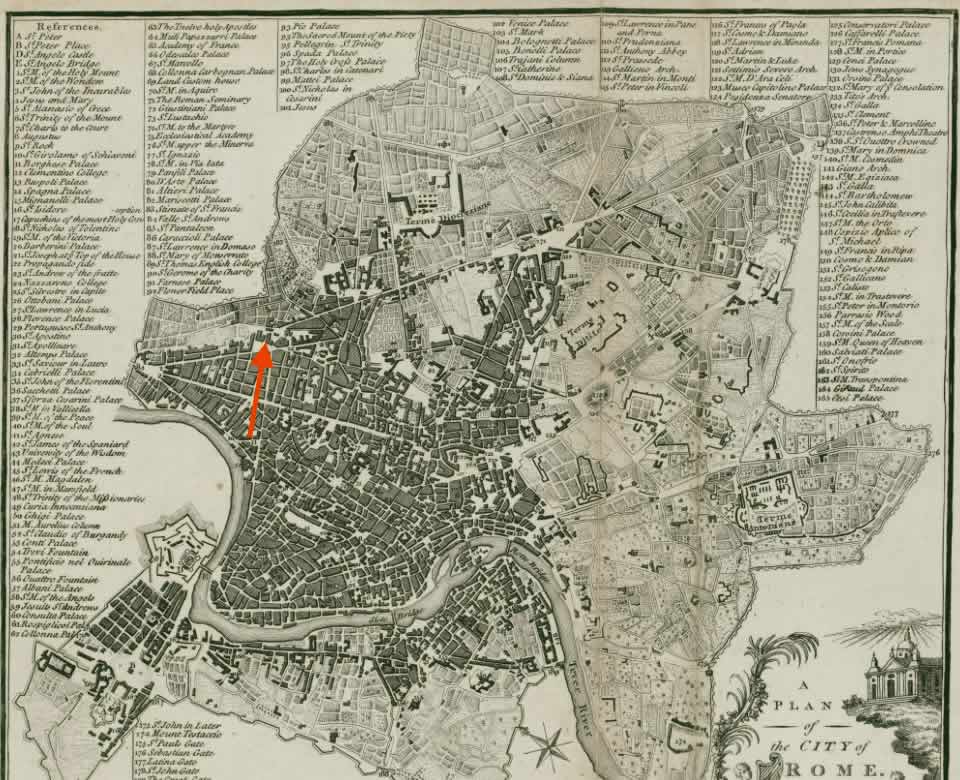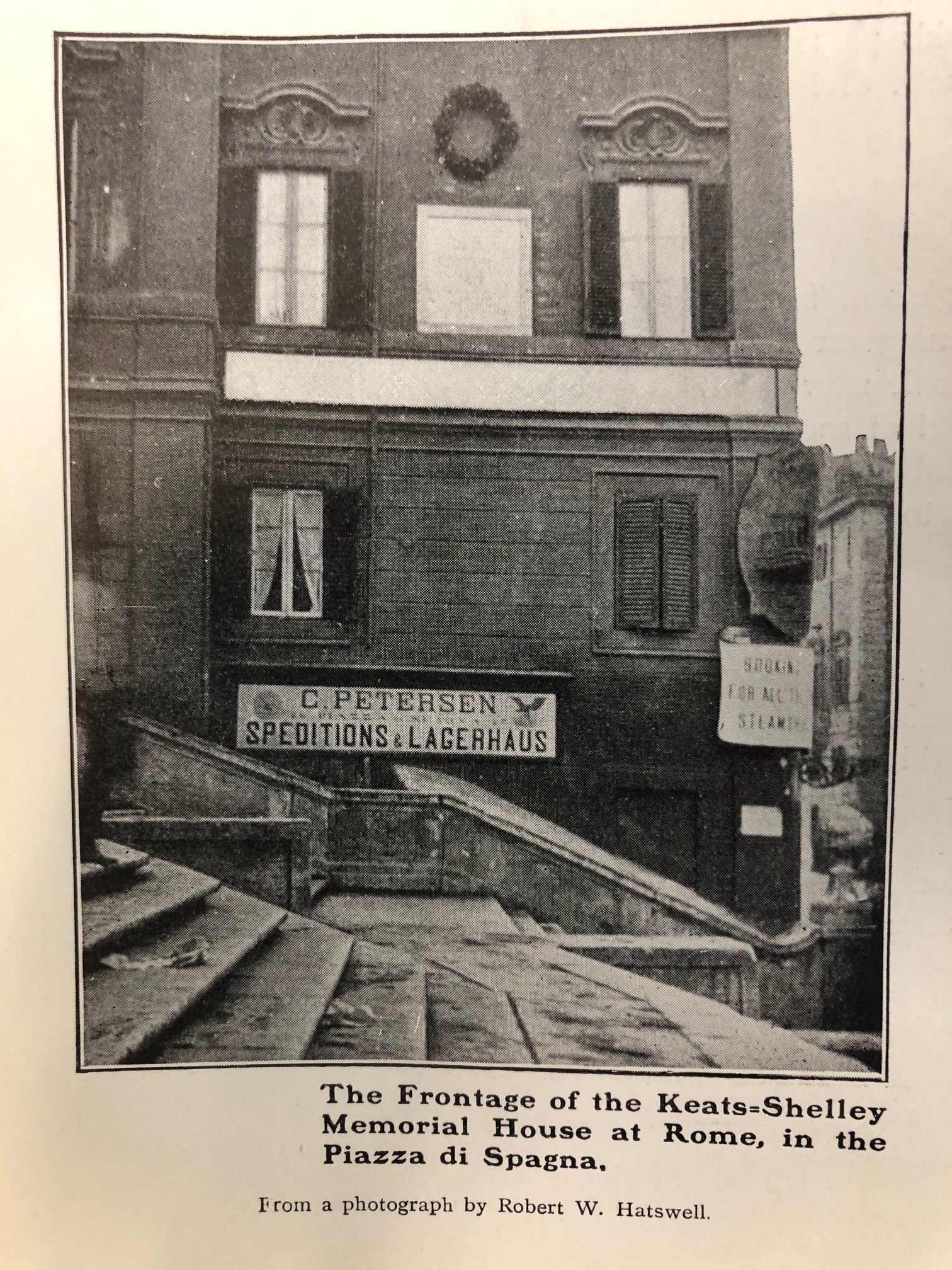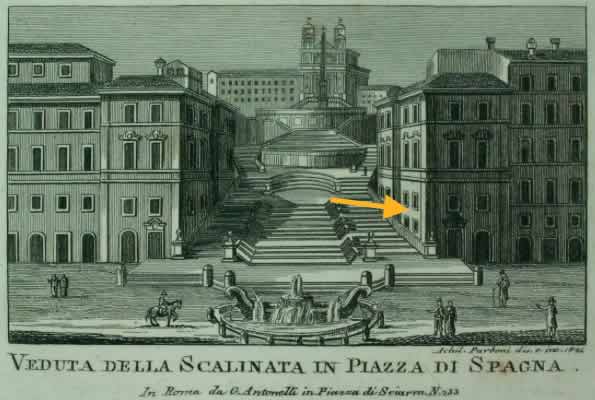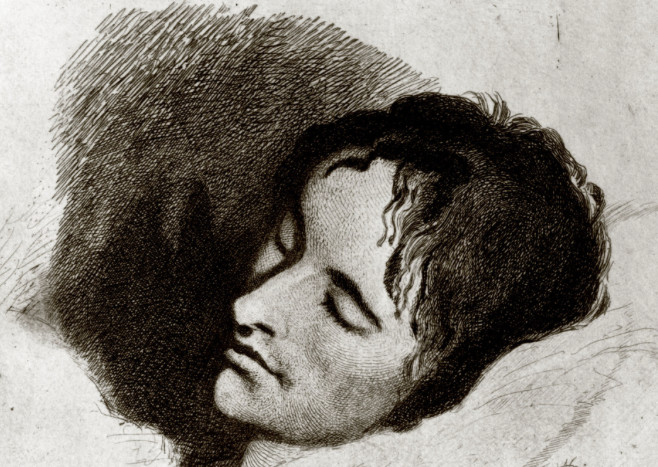25 January 1821: This Dreary Point
; A Man Governed by Imagination &
Feeling
26 Piazza di Spagna, Rome


Keats and his good friend Joseph Severn are in rooms at 26 Piazza di Spagna, Rome, arranged by Keats’s physician, Dr. James Clarke, who is also in Rome and very close by.
Keats, twenty-five years old, has been in Rome for not quite two months, having begun
his
voyage from England mid-September 1820, though initially slowed by bad weather and
then
quarantined in Naples. This trip from England to Italy’s warmer weather is solely
motivated
with the hope to restore Keats’s health, though even before he leaves England it is
apparent
to both him and his closest friends that he suffers with the most prevalent illness
of the
era, consumption—so named because the illness slowly consumes
an individual, and for
reasons not then understood. (It will take more than another fifty years for consumption
[tuberculosis] to be understood as the highly infectious white plague
that even today
remains a deadly, widespread disease in parts of the world.)


Severn watches over and nurses Keats for almost every moment since Keats’s departure from London. This is about the same amount of time that Keats watches over the decline and death of his younger brother, Tom, also from consumption, September to December 1818. Keats, then, knows what is likely to come, and for almost a year he has intimations that he is doomed by the terrible illness. We have to picture Severn carrying gaunt, pained Keats to the sitting-room from the bedroom and dressing him in clean clothes. Sadly, Keats is to some degree calmed, knowing that he has no hope. What has come to agitate Keats is Severn’s refusal to give him access to a bottle of opium so that he might kill himself. Severn is held captive by Keats, who, in utter fear, does not want Severn out of his sight; he does not want to die alone. At the end of his own life, almost sixty years later, Severn continues to express how he is haunted by Keats’s influence, as if he too does not want to die alone; he wants, and gets, his grave beside that of Keats. They are fashioned as twin graves.
By now, January 1821, Keats’s state is completely hopeless. His stomach and lungs
are fully
compromised. He can no longer digest food, and he constantly coughs up large amounts
blood-streaked fluids—clay-like expectoration,
Severn graphically describes it (25/26 Jan). His
body is in constant fever as it vainly attempts to fight the illness, while it also
craves
nourishment it cannot digest. Keats’s emotional state is, understandably, equally
strained:
both Severn and Clarke comment on Keats’s overwrought mind,
which they
causally couple with his physical illness. On 3 January, Clarke notes Keats’s state
of lung
and stomach degeneration, but also, now knowing Keats a little, he adds, I fear he has long
been governed by his imagination & feelings.
Keats certainly has, but it is striking
that Clarke, with his excused ignorance of how tuberculosis is contracted, ties the
presence
of the illness to what is most striking about Keats, and the kind of disposition that
likely
turns Keats to poetry in the first instance.

On 25/26 January, Severn writes to Keats’s very
good friend and publisher, John Taylor. Severn,
echoing Clarke, theorizes about Keats’s intense
feeling
and passions of mind.
Having passed countless hours listening to Keats
unburden himself from his deathbed about parts of his life
and various changes,
Severn attempts to describe Keats’s nature.
He concludes that Keats has lived intensely
without a sustaining calm of mind.
Severn suggests that this unrelieved, restless
ferment
in Keats’s emotions
and sensations
has brought him to this
dreary point.
(Severn writes sensations
twice in one sentence but replaces one of
them with emotions.
) Once more, Keats’s base character, his illness, and his vocation
of poetry are intertwined. But at this point there is only one real comforting thought
for
Keats himself: that soon he will soon die.

a deadly sweat…(Keats-Shelley House, Rome)
The terms of Severn’s insights are, though,
helpful: the balance of intensity in feeling and sensation through reflection is what
Keats
himself first points to in his poetics as requisite to great poetry. Back in late
1817, as
Keats begins to formulate the direction and character of his poetic progress, he conceives
that truth and beauty can be capably interlinked and are indistinguishable through
acts of
empathetic imagination—acts that, Keats notes, would ideally exist partly on sensation
[and] partly on thought.
This, Keats believes, is something like the position that William Wordsworth’s philosophic Mind
holds, and the poetical depth to which Keats aspires (to Bailey, 22 Nov. 1817). Poetic success comes when Keats manages to achieve or balance
a poetry of sensation without over-reaching emotions, and a poetry of thought without
a
palpable design upon us
: a poetry of poised, unobtrusive
intensity (3 Feb 1818).
Poetry,
Keats will write in anticipation of his greatest work of 1819, should
surprise by a fine excess and not by Singularity
(27 Feb 1818).
The balance that Keats strives to achieve in his poetry is, then, in some ways, tied
to the
balance he seems to have fought for in his life—a story mainly to be gleaned from
his letters.
In his poetry, Keats ultimately succeeds; but life, unlike poetry, is hardly perfectible,
and
is inconstant in its passing; poetry can offer or at least represent lasting perfections
and
constancies that life cannot offer, and much of Keats’s best poetry—on, for example,
the
unknowable story a timeless urn can tell; the fading but never-faded song of a nightingale;
a
season held still by its untroubled harmony; an ailing yet enraptured knight-poet
forever on a
cold hill side after experiencing a beautiful fate—addresses this condition and tension.
This
controlled intensity may be Keats’s enduring achievement as a poet, but as a person,
such deep
equipoise in the face of uncertainty was something that came and went from him—and
in the end,
he agonized over lost love and the meaning his experience—in one of his last known
letters, he
writes, we cannot be created for this kind of suffering
(to Brown, 30 Sept 1820). The
meaning of human suffering struggles to be resolved in the face of passing time or
by the idea
of meaningful afflictions, but the power of the capable human imagination can at least
render
this irresolution, as forms of both beauty and profitable uncertainty, not just for
one
passing moment, but for all moments to come.

